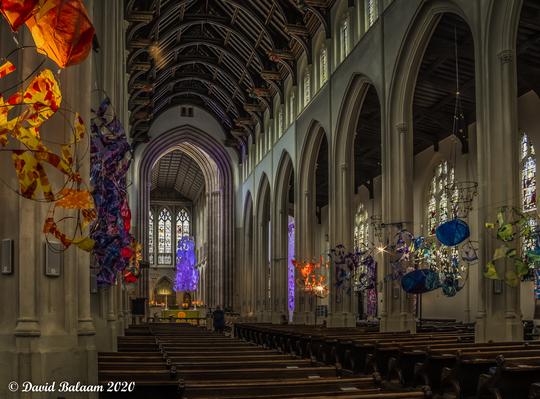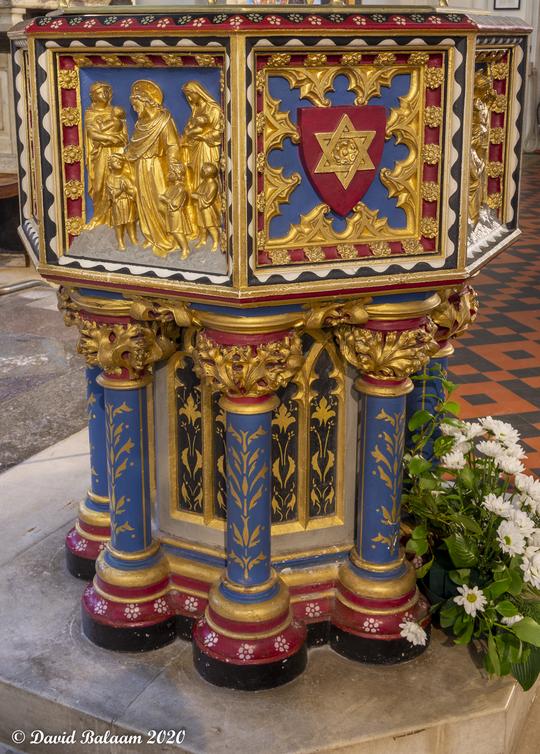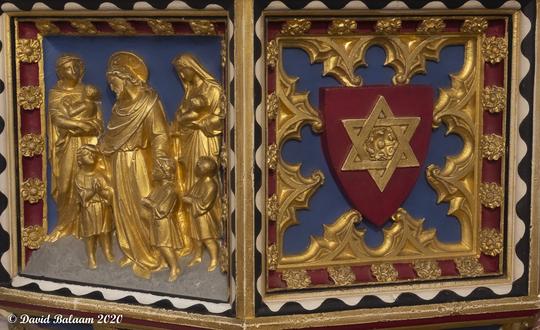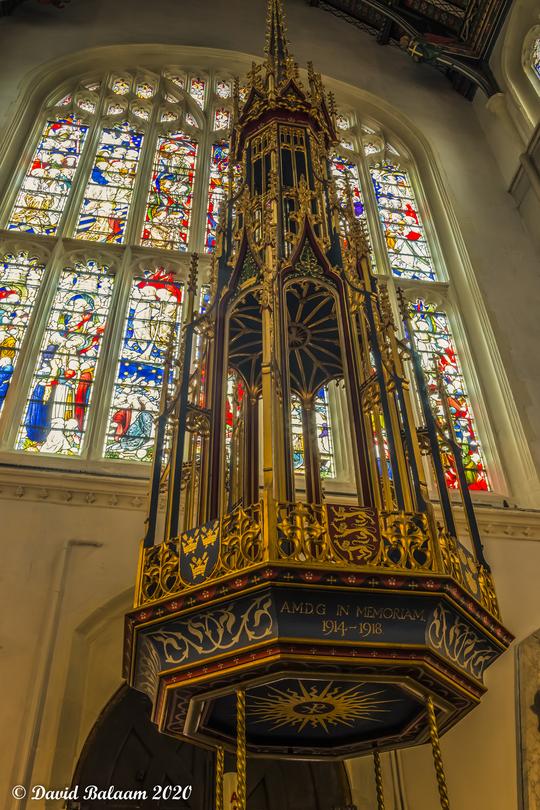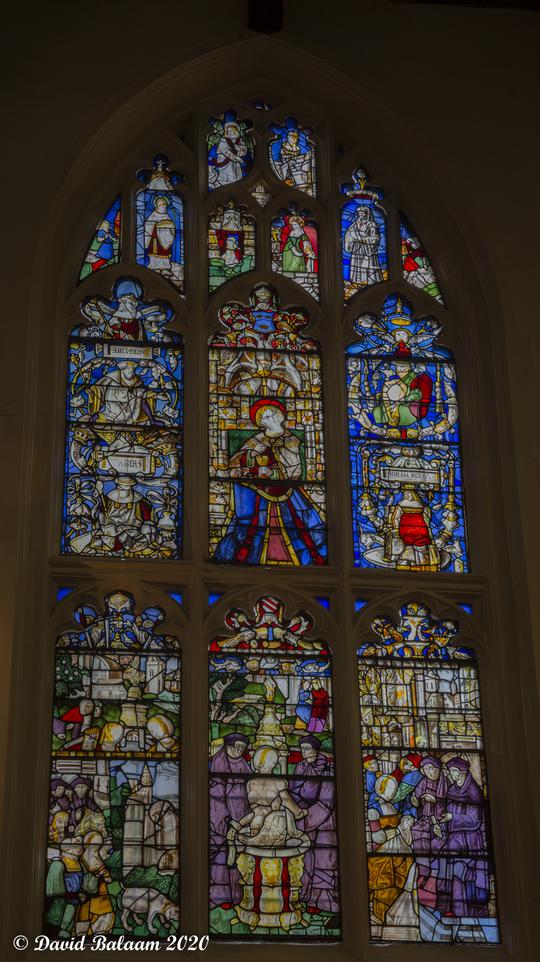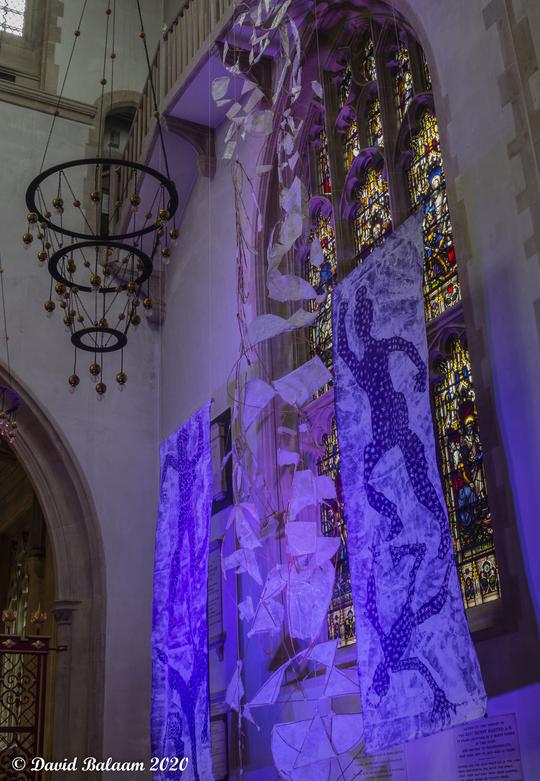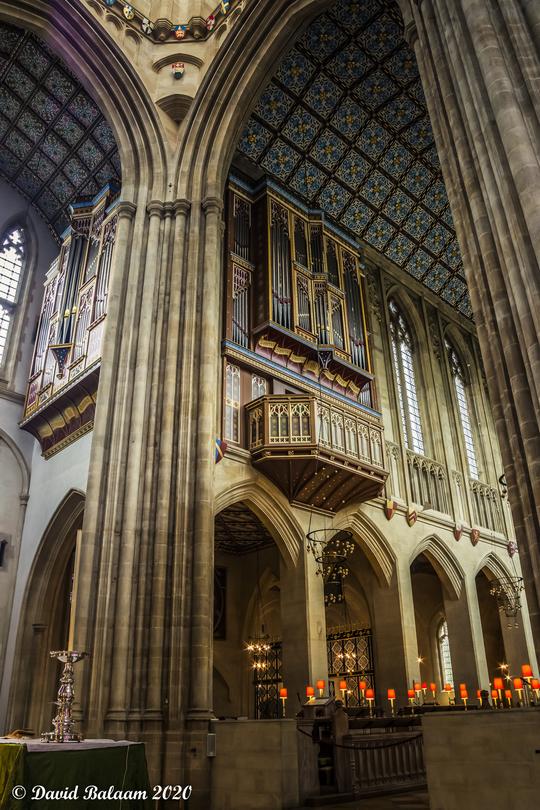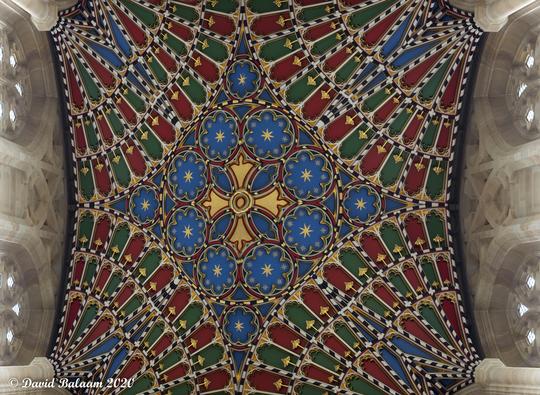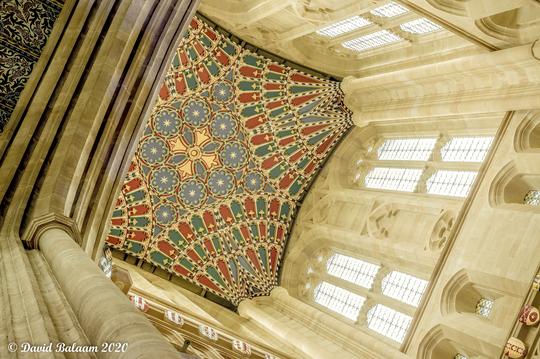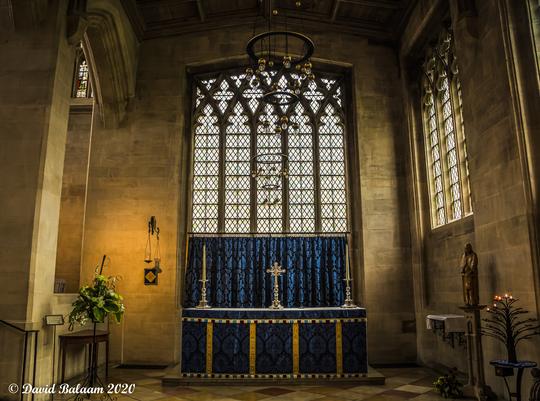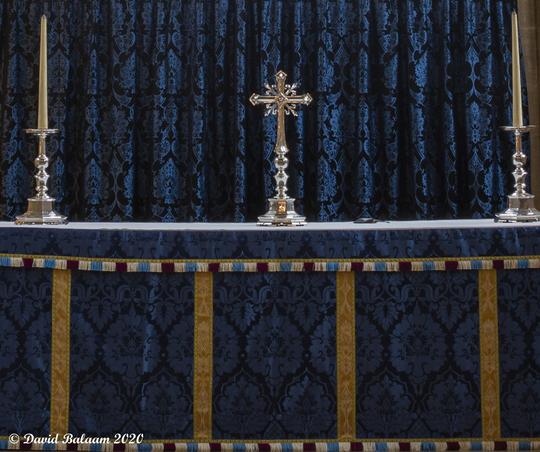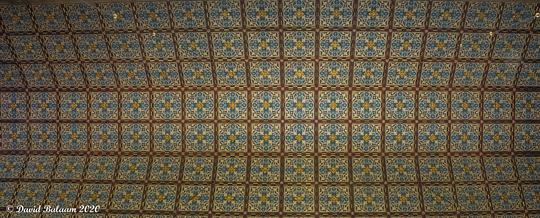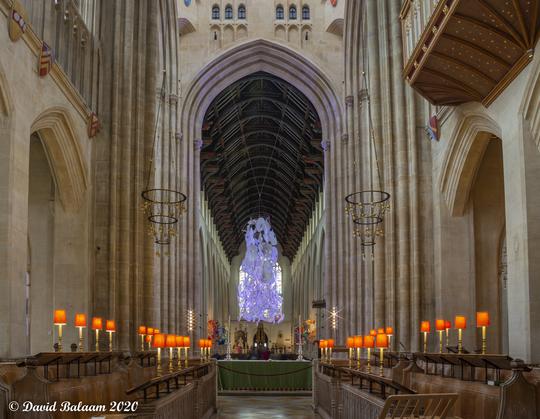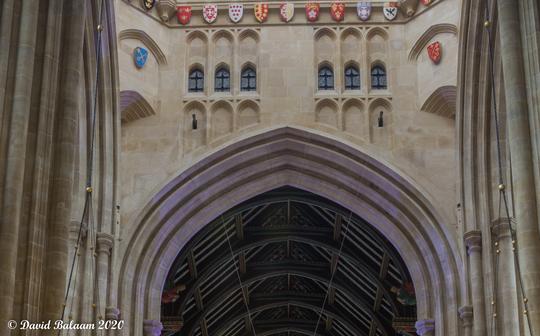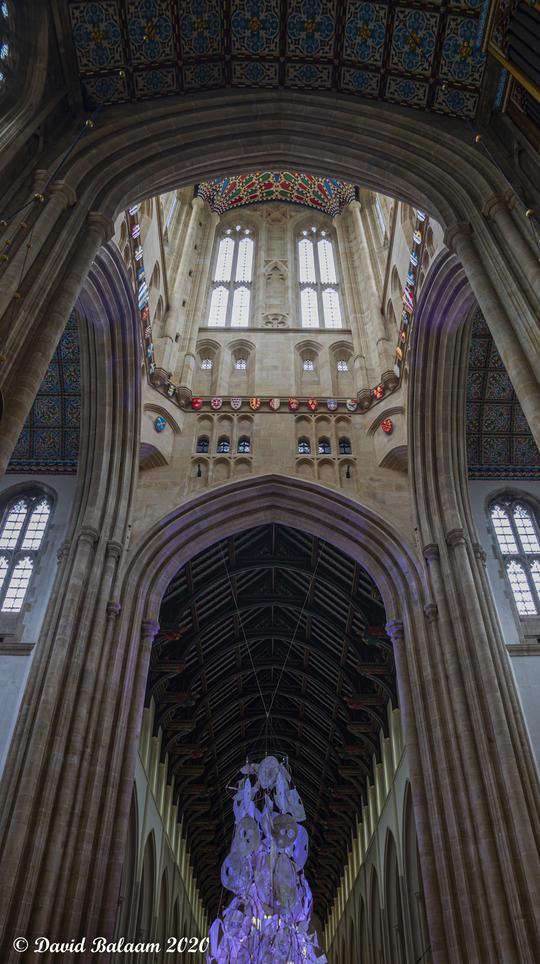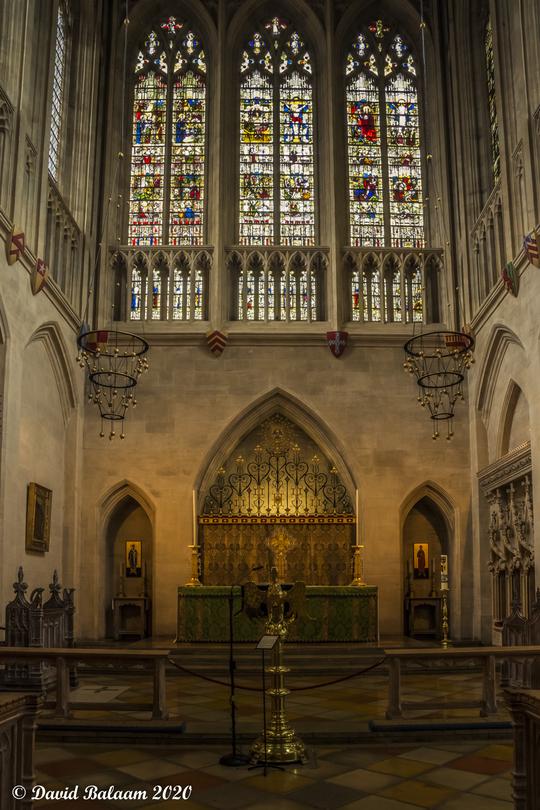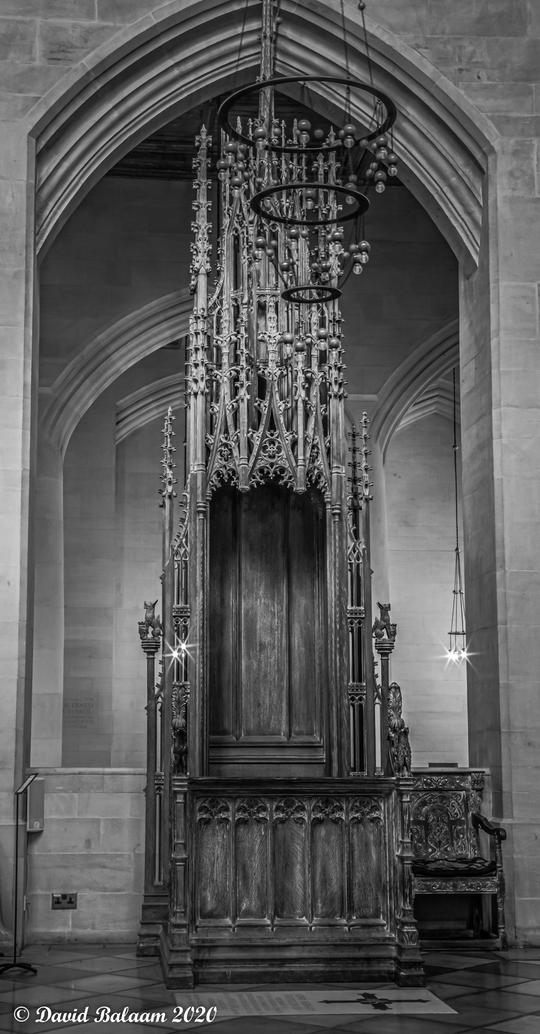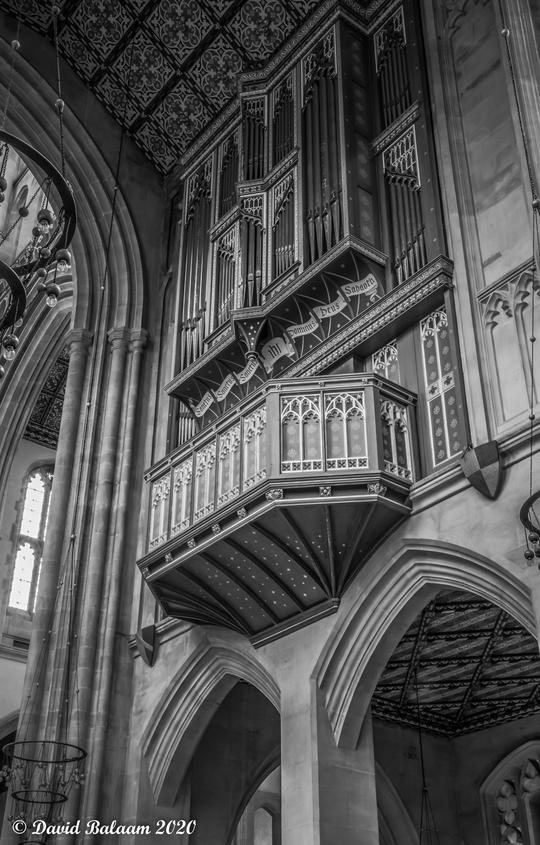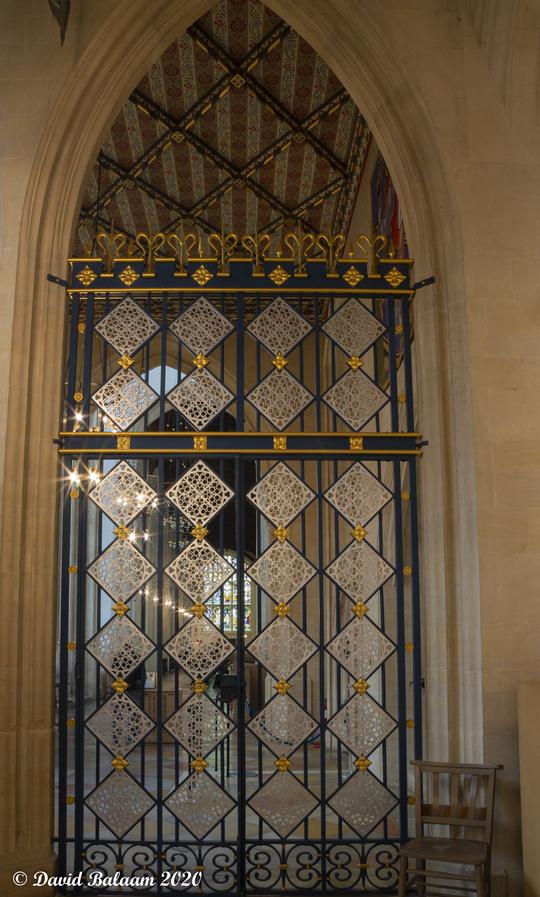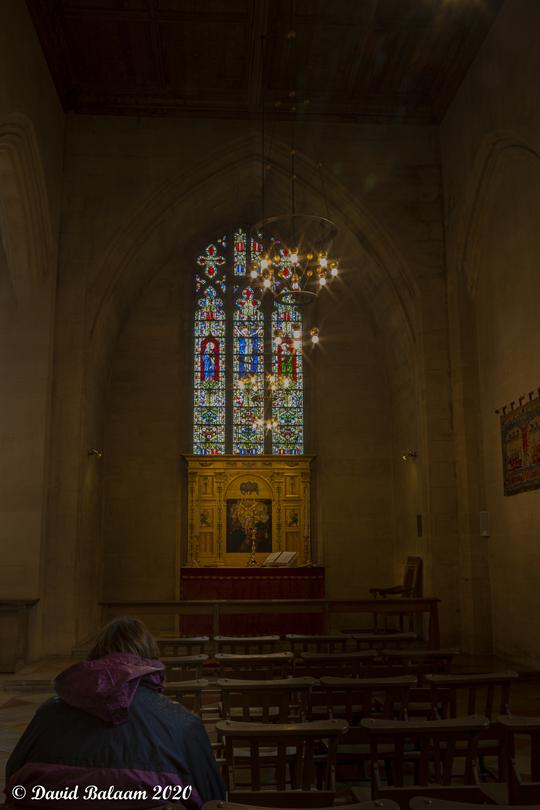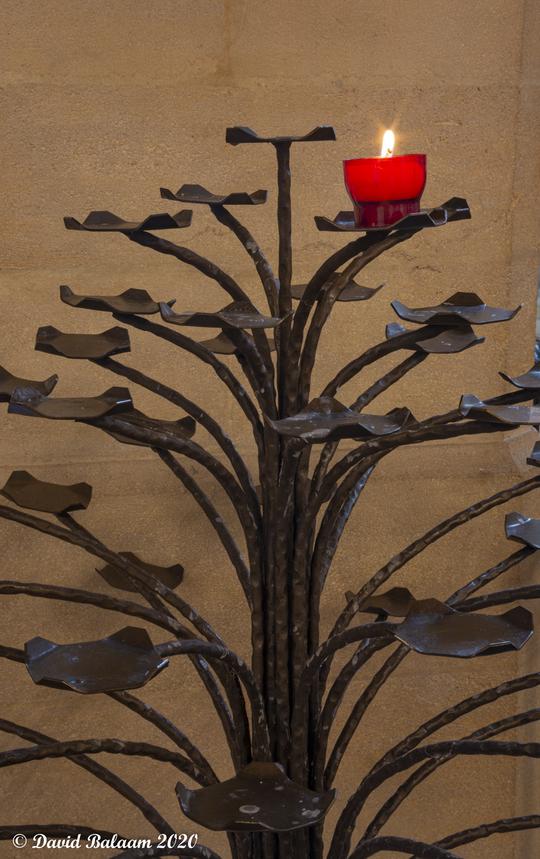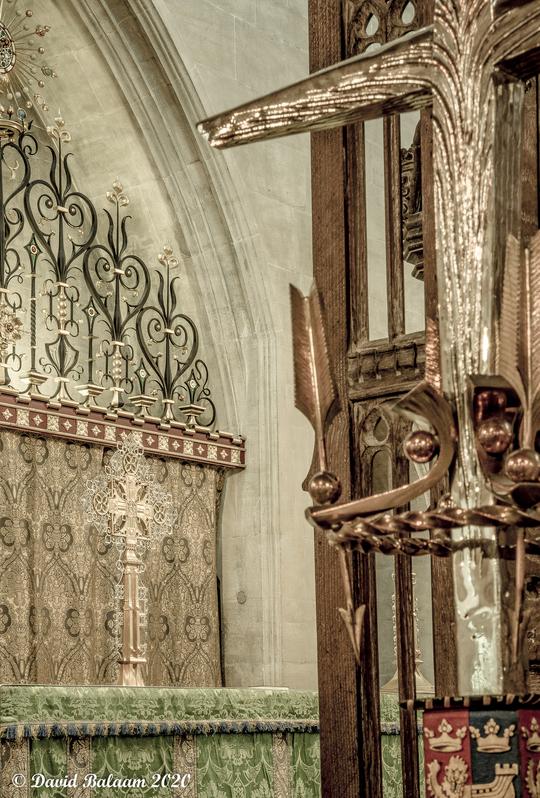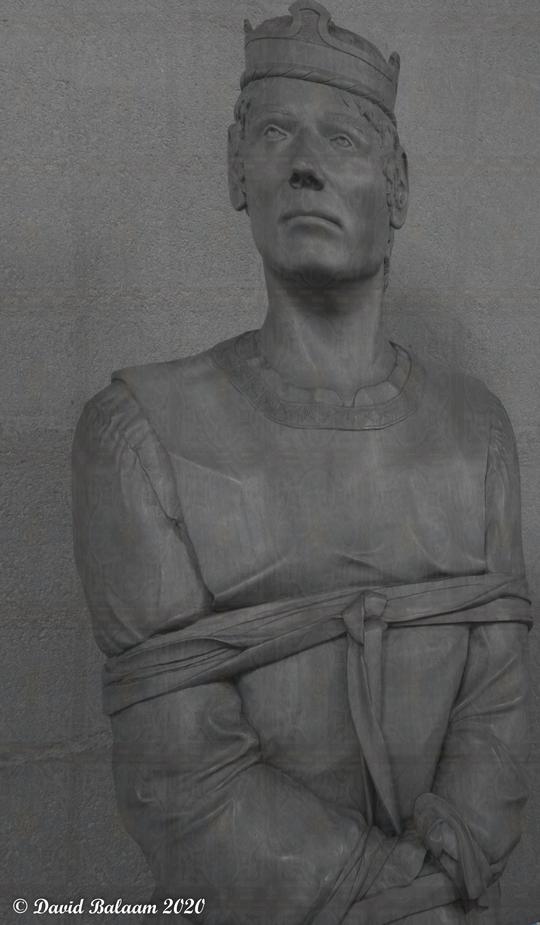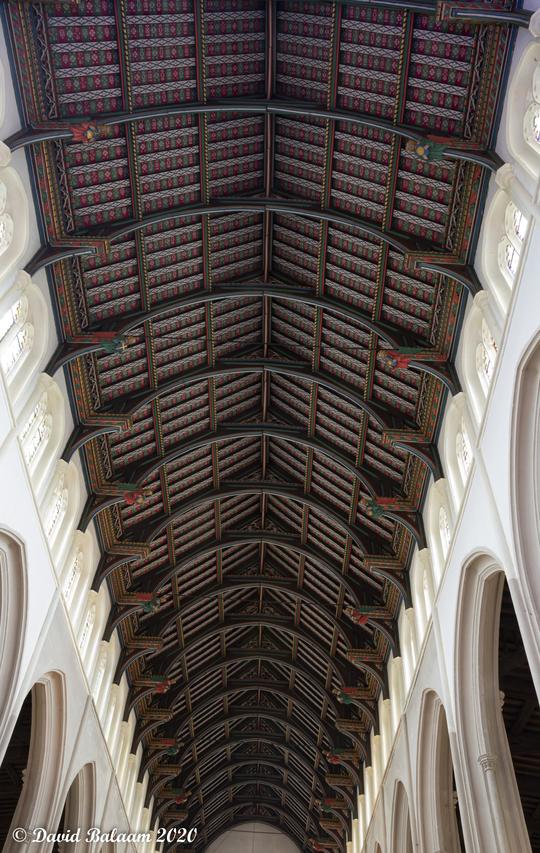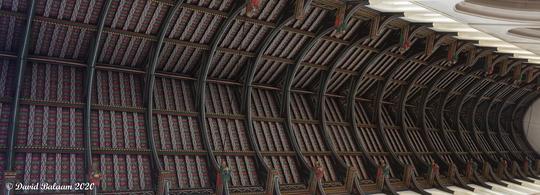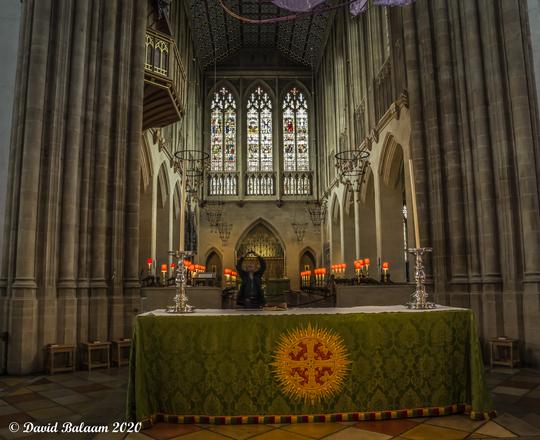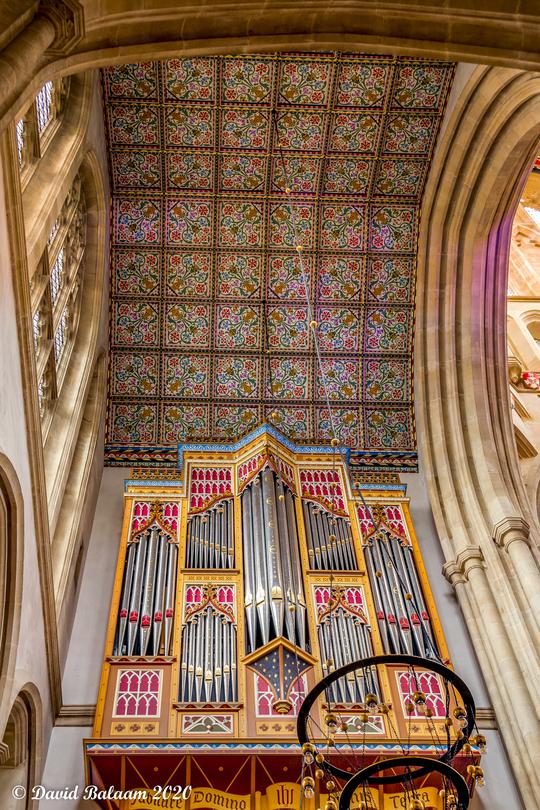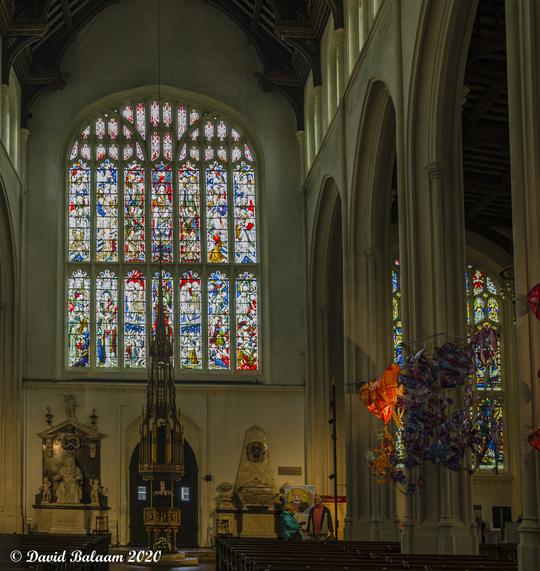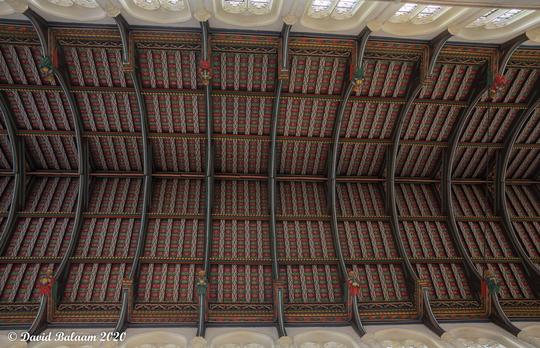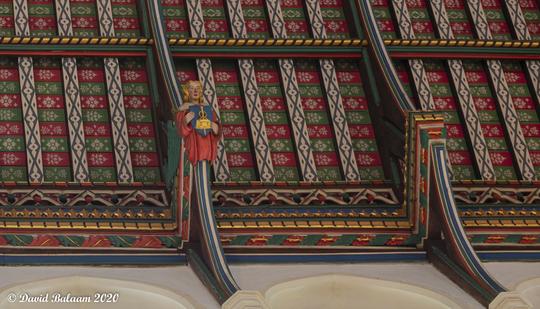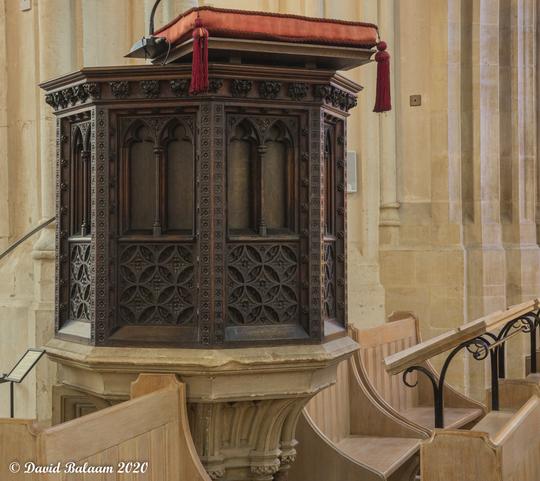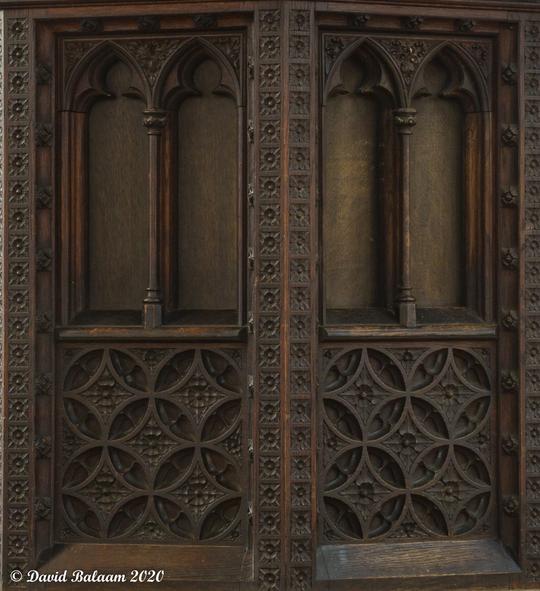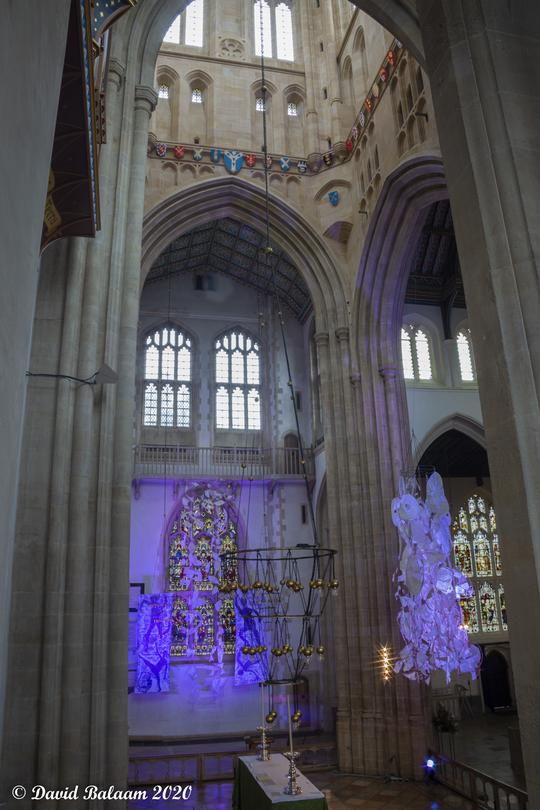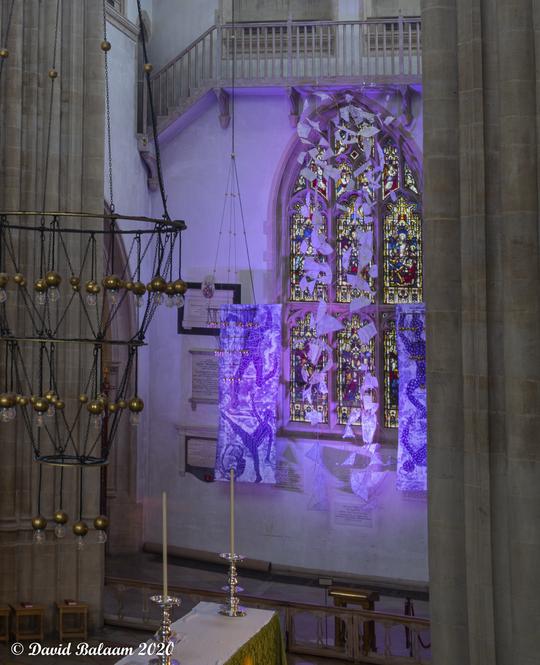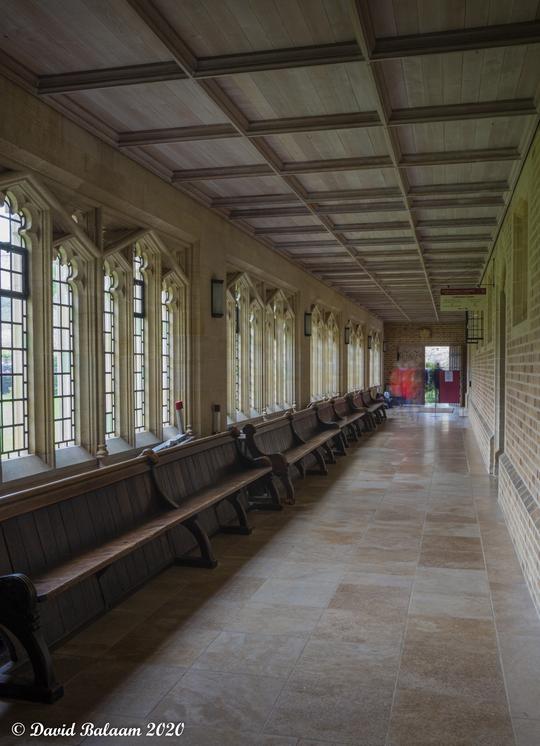St Edmundsbury Cathedral
A church has stood on the site of the cathedral since at least 1065, when St Denis's Church was built within the precincts of Bury St Edmunds Abbey. In the early 12th century the Abbot, Anselm had wanted to make a pilgrimage along the Way of St James to Santiago de Compostela. He was unsuccessful and instead rebuilt St Denis's and dedicated the new church to Saint James, which served as the parish church for the north side of Bury St Edmunds. Anselm was also responsible for building the abbey gate tower, known today as the Norman Tower, alongside St James's, which also served as the church's belfry and it continues in this function to the present day. This church was largely rebuilt, starting in 1503, in the Perpendicular style by John Wastell, a master mason who also worked on King's College, Cambridge. Further alterations to the building were undertaken in the 18th and 19th centuries, notably a new chancel and a hammerbeam roof by George Gilbert Scott. Most of the stained glass in the Cathedral is Victorian, by the firm of Clayton and Bell. The windows in the North Nave Aisle depict stories from the Old Testament and those in the South Nave Aisle the New Testament. Elsewhere, there is glass by C E Kempe and Hardman. One window has much older glass, possibly French or Flemish, which tells the story of ‘Susanna and the Elders’ from the Apocrypha. The font was designed in 1870 by George Gilbert Scott, constructed on a medieval shaft, with a cover by Frank Ernest Howard of Oxford. The decoration was added in 1960.
